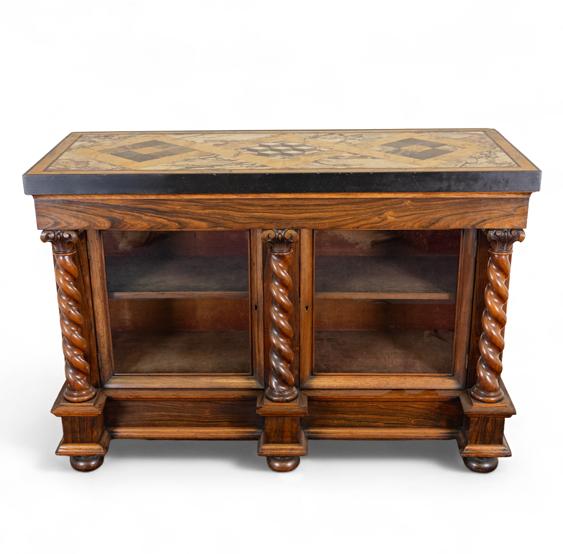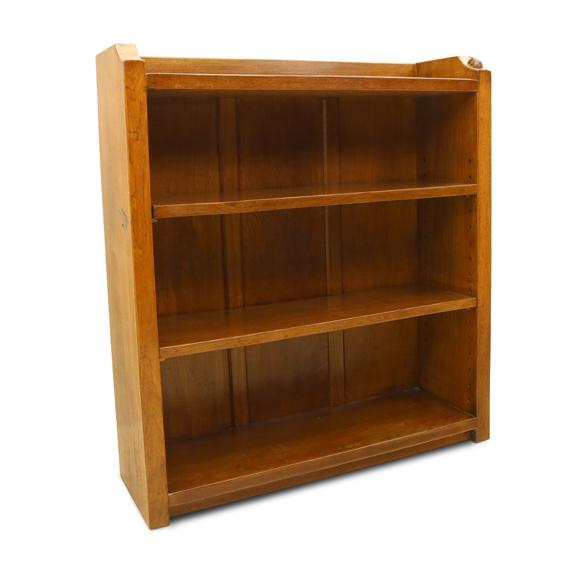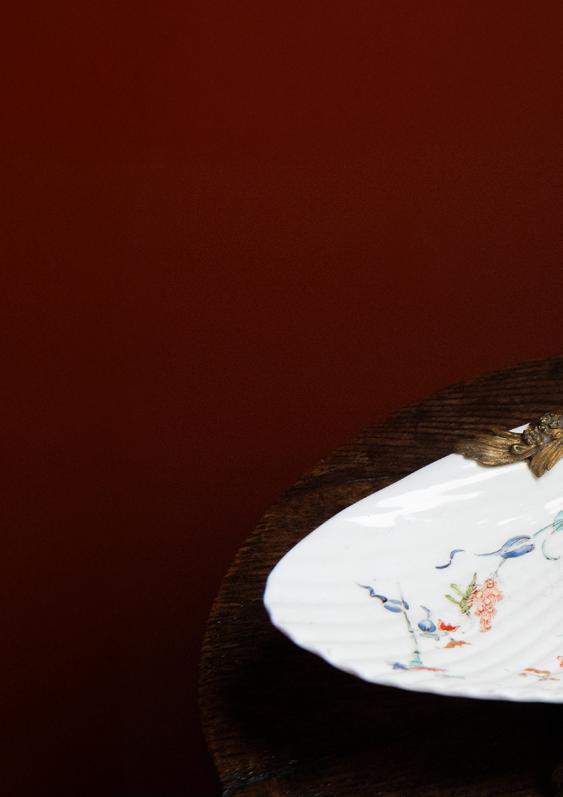
ENDS SATURDAY 20 SEPTEMBER | FROM 11AM



ENDS SATURDAY 20 SEPTEMBER | FROM 11AM

Tuesday 16 September | 9am - 4:30pm
Wednesday 17 September | 9am - 4:30pm
Thursday 18 September | 9am - 4:30pm
Friday 19 September | 9am - 4:30pm
Saturday 20 September | 9am - 4:30pm
Bid anytime online through our website, and join the live auction to bid in real-time as each item is sold, using our bespoke bidding platform, DS Live.

We’re delighted to share a first look at highlights from our forthcoming Country House Sale.
Held twice a year, this signature event captures the charm, tradition and enduring style of the classic British country home.
Carefully assembled by our team of experts, the sale features an exceptional array of antiques, fine art, period furnishings and decorative pieces – each selected for its quality, character and lasting appeal.

William IV rosewood cabinet with inlaid specimen marble top, the rectangular surface in Pietra-dura style with a central cube trompe l’oeil design, bordered by Siena, brecciated, pink and white veined, and black marbles. The cabinet features two glazed doors with a single shelf, flanked by barley twist columns, on a moulded plinth base with projecting corners and bun feet. Height 92cm.
£6,000 - 8,000

Pair of late 19th century Empire Revival mahogany side chairs, with scrolling sabre backs and crimson damask upholstery, gilt-bronze oak leaf and rosette mounts, the front legs formed as winged monopodiae ending in claw feet. Provenance: Kinloch Castle, Isle of Rum. Height 95cm.
£3,000 - 4,000
Empire Revival gilt-bronze mounted jardiniere, circa 1900, of circular form with laurel garlands and floral swags, fitted with a modern brass liner and side carrying handles, raised on tripod legs with winged caryatid masks and lion paw feet. Inscribed inventory no. X954, originally from the Empire Room, Kinloch Castle.
£4,500 - 5,500


Sir George Bullough, a Lancashire textile tycoon whose father purchased the island of Rùm as a summer residence and shooting estate, commissioned the construction of Kinloch Castle in 1897. Completed in 1900, it was conceived as a luxurious retreat, embodying the grandeur and excess of the Edwardian elite.
The Empire Room was the castle’s most opulent interior, lavishly appointed in the French Empire style. Here, gilded decoration and modern comforts combined to impress the Bulloughs’ aristocratic guests, while the neoclassical aesthetic, inspired by Napoleonic France, revealed the family’s cultivated taste for grandeur.
Today, surviving furnishings from Kinloch Castle are rare and evocative testaments to both the extravagance of the era and the exceptional craftsmanship that defined its interior.
Rare one-off Dunhill ‘Aquarium’ Half-Giant table lighter, circa 1955, the Lucite body reverse intaglio carved and hand-painted with Nicholas Nickleby winning the Royal Hunt Cup, Ascot, June 1955; the reverse with jockey Willie Snaith mounted. Gold-plated top with curved arm stamped Dunhill Reg. No 737418, base stamped DUNHILL LIGHTER. Height 7.5cm.
£12,500 - 15,000

Commissioned to commemorate one of Royal Ascot’s most memorable underdog victories, this rare Dunhill ‘Aquarium’ Half-Giant table lighter is a remarkable example of post-war British design. Made circa 1955, its Lucite body is hand-carved using the reverse intaglio technique and painted in fine detail with Nicholas Nickleby in full flight during his Royal Hunt Cup win. The reverse shows jockey Willie Snaith calmly mounted following their extraordinary triumph.
The lighter was a personal gift from the horse’s owner to Colin Hetherton, the veterinary surgeon whose expert intervention saved Nicholas Nickleby from retirement and made the win possible.
Dunhill’s Aquarium lighters are widely celebrated for their craftsmanship and individuality - each one uniquely carved and painted, with no two ever the same. Produced in small numbers and favoured by distinguished figures such as Sir Winston Churchill, these lighters are now considered icons of mid-century luxury. This oneoff commission, both functional and commemorative, stands as a testament to perseverance, excellence, and a truly unforgettable moment in racing history.


Mouseman oak open bookcase, with galleried top and signature mouse carving, fitted with two adjustable shelves. By the workshop of Robert Thompson, Kilburn. Height 92cm.
£1,200 - 1,500

Mouseman tooled oak money box, modelled as a wedge of cheese, featuring the signature carved mouse. From the workshop of Robert Thompson, Kilburn. Length 18cm.
£400 - 600


Mouseman burr oak stool, circa 1930s, with adzed finish, carved with the signature mouse motif. From the workshop of Robert Thompson, Kilburn. Height 34cm.
£1,000 - 1,500

Mouseman oak sideboard, adzed top with raised gallery back, over two short and three long drawers, flanked by panelled cupboard doors with wrought iron fittings, on octagonal feet, carved with the signature mouse to the right-hand door. Length 152cm.
£3,000 - 4,000


Pair of Victorian kingfisher dioramas by Allen & Co, York, each with two specimens in naturalistic settings against a painted backdrop, behind convex glass in ebonised oval frames, with paper label verso. Height 58cm.
£200 - 400

Rare mid-18th century West Pans coffee pot, circa 1764–1770, of baluster form, the moulded six-lobed body decorated in underglaze blue with a chinoiserie landscape, picked out in red and green enamel. Height 26cm.
£400 - 600
Late 19th century French 8-day Boulle mantel clock, in 18th century style with brass and tortoiseshell inlay and rococo mounts. Enamel dial with Roman numerals, Arabic five-minutes and pierced steel hands. Twin train movement striking the hours and half-hours on a gong. With pendulum. Height 31cm.
£120 - 180


This fine porcelain dish, attributed to Chantilly and dating to circa 1740–50, is modelled in the form of a shell and painted in the Kakiemon palette with an exotic bird, grasshopper and flowering foliage. In the 19th century it was mounted in gilt ormolu with a foliate handle and three scrolling feet, enhancing its decorative appeal and reflecting later collecting tastes.
When it entered the vendor’s family collection it was accompanied by a letter from the Ashmolean Museum. Dr. Oliver Impey, one of the leading authorities on Oriental ceramics, observed that the decoration appeared European, possibly Dutch, while confirming that the porcelain body was certainly 18th century, with the mounts added at a later date. The letter, signed by Ian Lowe in 1974, also records consultation with specialists at the Victoria and Albert Museum, whose opinions varied between Chantilly and Bow, highlighting the challenges of attributing such rare porcelains.
The case for Chantilly is strengthened by what seems to be a partially obscured horn motif on the base. A rare survival of early European porcelain, this charming piece embodies both the refinement of 18th-century taste and the fascination such objects hold for collectors today.

18th century porcelain dish, attributed to Chantilly, circa 1740–50, of moulded shell form, painted in the Kakiemon palette with an exotic bird, grasshopper and flowers, later mounted with ormolu handle and scrolling feet. Possible obscure Chantilly mark beneath. Height 10cm, including handle.
£700 - 1,000

Sally Arnup FRBS, ARCA (1930-2015)
Bronze Boxer with squirrel, signed and numbered II/X. Height 71cm.
£700 - 1,000

Late 20th century silver stirrup cup, modelled as a fox head to a cup of plain fluted form, hallmarked Royal Irish Silver Co, Sheffield 1971. Height 11.5cm.
£400 - 600

Late 18th/early 19th century Prattware pottery figure of a horse, possibly Yorkshire Potteries, circa 1790-1800, painted and sponge decorated in manganese, with blue spotted saddle secured with a yellow girth, upon a rectangular green base. Height 15.5cm
£700 - 1,000

Chinese Wucai vase and cover, Transitional period, 17th century, of baluster form, painted with ladies on a terrace and figures on horseback with attendants in a fenced garden. The domed cover, with knop finial, decorated with boys at play. Height 37cm.
£1,000 - 2,000

18th century Chinese bronze censer, of globular form with twin zoomorphic mask ring handles, the body applied with precious objects, raised on three tapering feet. Cast with an apocryphal Ming Xuande mark to the base. Height 9cm.
£600 - 900

Italian Grand Tour micromosaic plaque, rectangular, depicting a rural landscape with figures and a horse-drawn cart before buildings and a windmill, set within a silver frame. Micromosaic 8 × 5.5cm; including frame 9 × 6.5cm.
£1,500 - 2,500
The Grand Tour was an essential journey for wealthy Europeans during the 18th and 19th centuries, undertaken to experience the art, architecture and culture of classical antiquity and the Renaissance. Travellers returned with works of art as mementoes, with micromosaics among the most coveted. Fashioned from thousands of minute glass tesserae, these pieces combined technical virtuosity with picturesque or classical subjects, appealing both as souvenirs and as refined statements of taste and education
This plaque is a particularly detailed example, with remarkable depth and perspective in the trees, buildings and sky, and finely observed figures and animals animating the rural scene. Such works were often set in jewellery, furniture or frames, serving as a reminder of Italy’s landscapes and rich history.


Late 19th century French cast brass and ormolu 8-day cartel wall clock, the ornate case adorned with urn finials, garlands, ribbon bows and cockerels. White enamel dial with Arabic numerals and pierced gilt hands. Twin train movement striking hours and half-hours on a bell. With pendulum and key.
£3,000 - 4,000

Morison & Co, Edinburgh, rare late 19th century double Sutherland table or étagère, the upper tier with serpentine drop-leaf top, brass edging and chevron marquetry with floral inlay, on arched supports with gilt bronze mounts above a rosewood-veneered lower tier with kingwood crossbanding. Gate-leg drop leaves on cabriole legs with gilt bronze sabots. Open width 75cm.
£2,000 - 3,000


19th century walnut and brass bound games compendium box, painted to enhance the grain, of rectangular form with brass cartouche engraved with lion crest. The red leather and blue silk lined interior with fold-down board and fitted tray containing playing cards, ebony dice towers, stained bone draughts and chess pieces, ivory dice, ivory and ebony whist markers, and brass bezique and cribbage boards and markers. Height 15cm.
£600 - 900


Rockingham porcelain basket, circa 1830, of elongated octagonal form with gilt entwined branch handle, the centre painted with a view of Eggesford House with figures on foot and horseback, titled beneath Eggesford House. Hon. Newton Fellowes The rim moulded and encrusted with flowers and leaves, some gilt-detailed, with puce Griffin mark beneath. Width 23cm.
£200 - 400

Rockingham porcelain card rack, circa 1830-42, painted with a view of the River Eroch, Perthshire, with encrusted flowers, and green ground panels to sides. Titled beneath and bearing puce Griffin mark. Width 13.5cm.
£200 - 400
Rockingham porcelain card rack, circa 1830-42, painted with a view of Bothwell Castle, with encrusted flowers, and green ground panels to sides. Titled beneath and bearing puce Griffin mark. Width 13.5cm.
£200 - 400


Rockingham porcelain basket, circa 1830, of elongated octagonal form with gilt and encrusted handle, the centre painted with a view of ‘New Cemetery Liverpool’, the rim moulded and encrusted with flowers and leaves. Titled beneath and bearing puce Griffin mark. Width 23cm.
£150 - 250

Regency carved giltwood convex mirror, circular frame with reeded ebonised slip and bold rope-twist moulding, surmounted by an eagle with outstretched wings, flanked by acanthus scrolls, the apron with acanthus leaves and flower bud finial. Height 90cm.
£1,200 - 1,600

BROWSE THE FULL CATALOGUE
